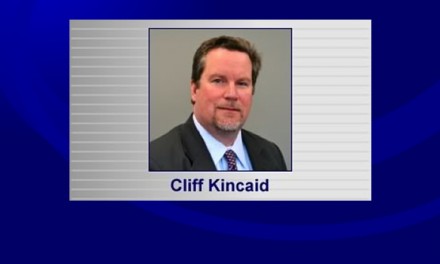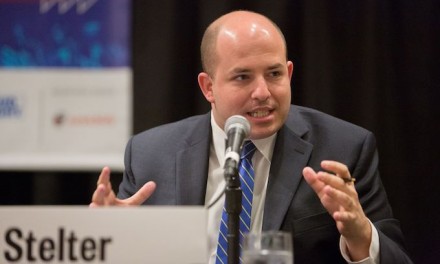Climate cultists have strayed far from science in their crusade to “save the world.” The latest speculation is that wolves and beavers, and the “rewilding” of parts of the planet, will sequester carbon dioxide. Common sense demonstrates that exponentially more carbon would be sequestered — and water and soil preserved — by releasing cows from Concentrated Animal Feed Operations and “rewilding” them to managed rotational grazing.
Cows were slandered for farting, but now researchers say bison, sea otters, and, yes, beavers will save humanity from destruction. With the human population topping 8 billion, it’s hard to imagine how beavers and bison will counterbalance greenhouse gas production, but straight-faced scientists get paid to say so.
Rewilding is hardly a “proven carbon capture technology” and is easily proved fatuous (much like dissing cows for flatulence). The same voices call to get rid of cows.
For sequestering carbon, there is little difference between bison and cows (though cows are eminently more efficient at producing meat). Yet the proposal is to eliminate cattle, while returning bison to the land. As recent efforts to shut down farmers in Holland and Belgium reveal, carbon fantasists do not worry about how to feed people — only how to cool the globe. A truly vast army of wolves, beavers, and bison will be required to offset the fossil fuels employed to grow the plants intended to replace beef.
America is behind Brazil and China in cow populations, with some 94.4 million cows. Cows provide the same benefits as bison to the soil. As the Sierra Club explains:
This all may seem contrary to what you may have known about grazing animals impacting the climate. Typically we hear about their methane emissions, which is a greenhouse gas that causes considerable climate impacts. … However, when bison are not subjected to conventional agricultural techniques that “denude the soil of vital grasses” therefore reducing its carbon uptake and eroding the soil, they could actually help ecosystems function better, leading to higher rates of productivity and more carbon sequestered[.]
America has far more cows than bison, and they will restore depleted soils. However, some 70.4% of U.S. cows are confined in large industrial facilities. We are told this is inhumane, so we must not release them, but replace them with plant (or bug) diets.
As with bison replacing cows, this nonsense comes full circle: crops destroy soils and release massive amounts of greenhouse gasses. More, they are grown using fossil fuel–driven tractors and harvesting equipment and are largely dependent on synthetic fertilizers (made from natural gas) and chemical applications of glyphosate, herbicides, and pesticides. Monoculture cropping is likely killing the bees. Cows don’t hurt bees.
Rotationally grazed, grass-fed cows convert sunlight to food through grasses humans don’t eat. Their manure feeds the soil biome, increasing plant growth without tilling:
The amount of carbon in an acre of grassland versus an acre of cropland depends on soil type, topography and other factors, but based on numerous studies researchers have determined that converting grassland to cropland results in a 30 to 40 percent loss of carbon stored in the ground.
Those who seek to replace beef with beets propose to release huge amounts of carbon!
Most agricultural generation of greenhouse gasses arises from the estimated 335 million tons of manure generated each year in the U.S., which also threatens water supplies and human health from airborne pathogens. That manure is generally “spread” back onto croplands with diesel-burning tractors that compress the soil. Shifting cooped up cows back to pasture converts that manure liability into an asset that replaces synthetic fertilizers, and it spreads itself!
Wise voices agree that returning livestock to the land is a better course than plowing up more ground to grow plants to replace them:
[M]ost of the remaining grasslands in the United States are in private ownership. Due to market forces, many of these lands are at risk of being converted to cropland including corn and soybeans. When grasslands are plowed under, more carbon is released into the atmosphere, making it more difficult to avoid the worst effects of climate change[.] …
Grasslands require a couple of things to keep them healthy and diverse: fire and grazing. … Historically, grasslands were grazed by bison and elk. … Today, bison, and in fewer cases elk, still perform this needed natural service, but another animal also serves the same purpose: the common cow.
Corn grown for animal feed covers some 30 million acres of U.S. lands. Grass-fed beef doesn’t need corn, creating even more carbon/pollution savings. Returning cows to grass will do far more than bison herds, let alone beavers or wolves.
Less than 1% of the nation’s 360,000 bison are wild. The bison is considered “ecologically extinct.” In contrast, tens of millions of cows are available for a bovine “back to the land” movement. They would quickly sequester more greenhouse gasses than all solar-power and EV gadgets combined. The animals will also be healthier, reducing antibiotic use. Nurturing the 10,000-year symbiotic bond between cows and humans sustainably provides meat and manure — without guilt.
Thousands of Dutch farms are targeted to be closed. Their cows are not being relocated to a zoo in Portland, Ore. They are to be killed. Globalists who push to kill cows to save them from harm may kill humans to save the planet.
Support your local farmer, and stand up for cows, a marginalized group who cannot speak for themselves. When researchers peddle beavers, bison, and wolves, it’s probably time to buy a cow as a revolutionary act.
Lawyer, farmer, and author John Klar hosts the Small Farm Republic Substack and podcast from his Vermont farm. His new book addresses farming, environment, and conservative politics: Small Farm Republic: Why Conservatives Must Embrace Local Agriculture, Reject Climate Alarmism, and Lead an Environmental Revival.
© Copyright © 2023 American Thinker, All rights reserved.
—-
This content is published through a licensing agreement with Acquire Media using its NewsEdge technology.



















Texas Longhorn cattle, who the Spanish originally brought over and let loose to rewild are the only species that were rewilded onto the Texas plains, only then to again be re-domesticated for human consumption after the Civil war. If only we could re-domesticate the wayward Democrats who started out as Freedom loving Jeffersonians, morphed into southern Slave holding Democrats, reverted to LBJ great society freedom seekers, now morphed again into tax slaveholding communist/socialists who are Democrats in name only. It will probably take another civil war to revert them back to Jeffersonian true American if they don’t physically and psychologically geld themselves and their party bulls out of existence, first in misgendering forced policies of idiosyncratic idiocracies of inane anti-bovine indoctrinations, or die of the self-produced political bovine flatulence that currently bounces about their Biden created gassed brains, that always when attempting of getting to the bottom of things, it is only in their bottoms, where their brains are found to be located. Humans are 18% carbon. Take the carbon out and you just end up with damaged Democrat goods and candidates, with depleted minds unable to grasp workable solutions, no longer living in fully functional conditions and thought processes that can be defined as human, let alone workable.
How’s about we get RID of the excess population, START feeding the criminals, to the animals! I hear the gator population in the everglades could do with some fresh meat.
Hamburgers
Steak!!! Give me a nice juicy COW STEAK!
it has already been shoved down our throats for a while now.
watch tv commercials for almond milk and plant based meat substitutes.
more evil from the climate change cartel who by the way will not do with out pork,beef, chicken like
the rest of us will.
I won’t EVER EAT one of those fake burgers, OR drink almond (or any other type) of milk, that is NOT FROM A COW!